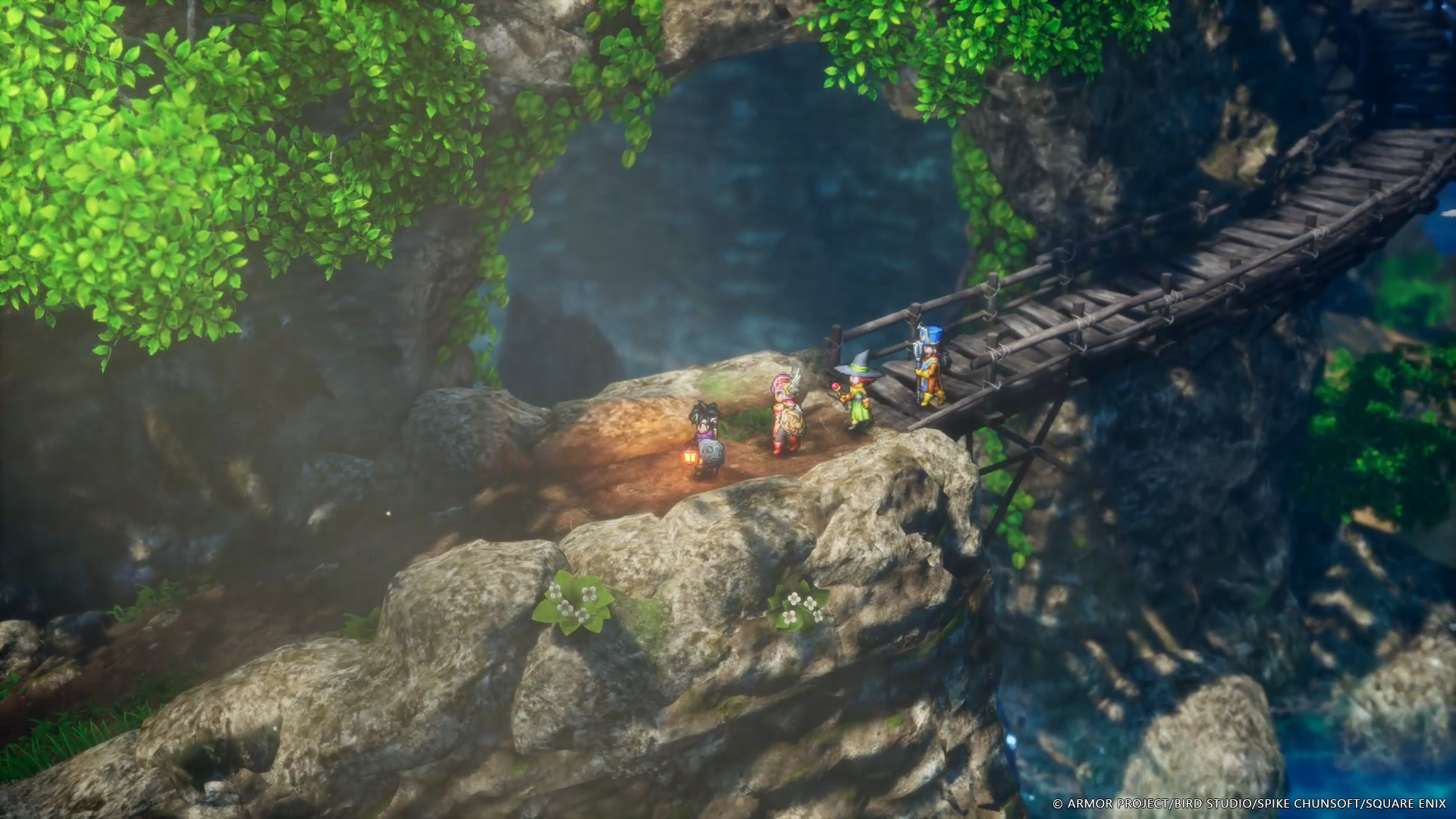Why Dragon Quest III HD-2D Remake's 'zombie tech' is the future of retro-gaming

By the general standards of video game technologies, Square Enix’s HD-2D doesn’t sound like much of a game-changer - it's no Unreal Engine 5. But in practice, as demonstrated in the excellent Dragon Quest III HD-2D Remake (released for the best games consoles), it proves more than deserving of our attention.
Essentially, this game developer tech offers a means of endowing the most ancient of retro games with visuals that, while they still generally operate from an isometric rather than first or third-person perspective, at least past muster in the 21st century, featuring 3D backgrounds yet retaining a pixel art feel. It is, if you like, a zombie technology, in that it breathes new life into what were previously the deadest of games.
Its colour palette absolutely pops, sometimes crossing the line from vibrant to lurid
Its most recent application is in the just-released Dragon Quest III HD-2D Remake. When I played that I was, frankly, amazed. Seminal though the original game was – it was a key player in establishing the general blueprint for RPGs as we now know them – you wouldn’t describe it as a looker. It was released in 1988 for the 8-bit Nintendo Entertainment System (read more about this hardware in our best retro consoles guide). But the HD-2D Remake has an air of solidity to its visuals, with textures readily discernible as, say, sand, stone or even water. And its colour palette absolutely pops, sometimes crossing the line from vibrant to lurid.
Dragon Quest III HD-2D Remake paves the way

Underneath the visuals, Dragon Quest III is a surprisingly meaty and deep RPG – astonishingly so, given its age. The turn-based combat seems risibly easy at first, but soon develops some tactical complexity – you can see a line from it all the way to the glorious Metaphor: ReFantazio. It contains well over 20 hours of amiably-vibed joy.
With its HD-2D technology, Square Enix has hit on a brilliant means of updating ancient games so that a new audience can discover their charms. Without, one presumes, throwing hundreds of millions of development dollars at those games (as it has done, albeit brilliantly, with the Final Fantasy VII remakes).
But it might have opened a Pandora’s Box, since a clamour is already growing for Square Enix to give more of its back-catalogue the HD-2D treatment – and maybe, dare I suggest, licence out its tech to other publishers. The first game to use HD-2D technology wasn’t a retro classic but 2018’s Octopath Traveller.
Dragon Quest III HD-2D Remake’s producer Masaaki Hayasaka told our sister site Games Radar, the game he would most like to see reanimated via HD-2D is 1994’s Final Fantasy VI: “Octopath Traveler – the first HD-2D title – was developed while referencing FFVI, as it had the highest quality pixel art.”
Daily design news, reviews, how-tos and more, as picked by the editors.
A masterclass in pixel art revival

When Dragon Quest III HD-2D Remake was first previewed, original creator Yuji Horii was at pains to point out that Square Enix concentrated on Dragon Quest III because it came first in the chronology of the original Dragon Quest trilogy, and the company is already working on HD-2D Remakes of I and II. Plus it treated 1994’s Live A Live to an HD-2D Remake in 2022.
The technology just begs to be used to create a sort of museum of the origins of Japanese RPGs (universally known as JRPGs), particularly since, via Dragon Quest III, it has shown it can be just as powerful when applied to 8-bit games as to 16-bit ones. To which end, I’d be very happy if any of the first six Final Fantasy games reappeared as HD-2D Remakes.
However, the game I’d most like to see resurrected in that manner would have to be 1995’s Chrono Trigger, a stone-cold classic whose development team included Final Fantasy originator Hironobu Sakaguchi and Yuji Horii. And just imagine if Square Enix allowed Nintendo to apply the technology to the early Zelda games.
Love classic games? Read our take on classic game platform AntStream Arcadehy not also take a look at our GameMaker explainer and start creating your own games.
Steve has written about video games since the early 1990s. Nowadays, he also writes for The Guardian, Pocket-lint, VGC and Metro; past outlets include Edge, The Daily Telegraph, The Sunday Times, The Mirror, The Face, C&VG, Esquire and sleazenation.
